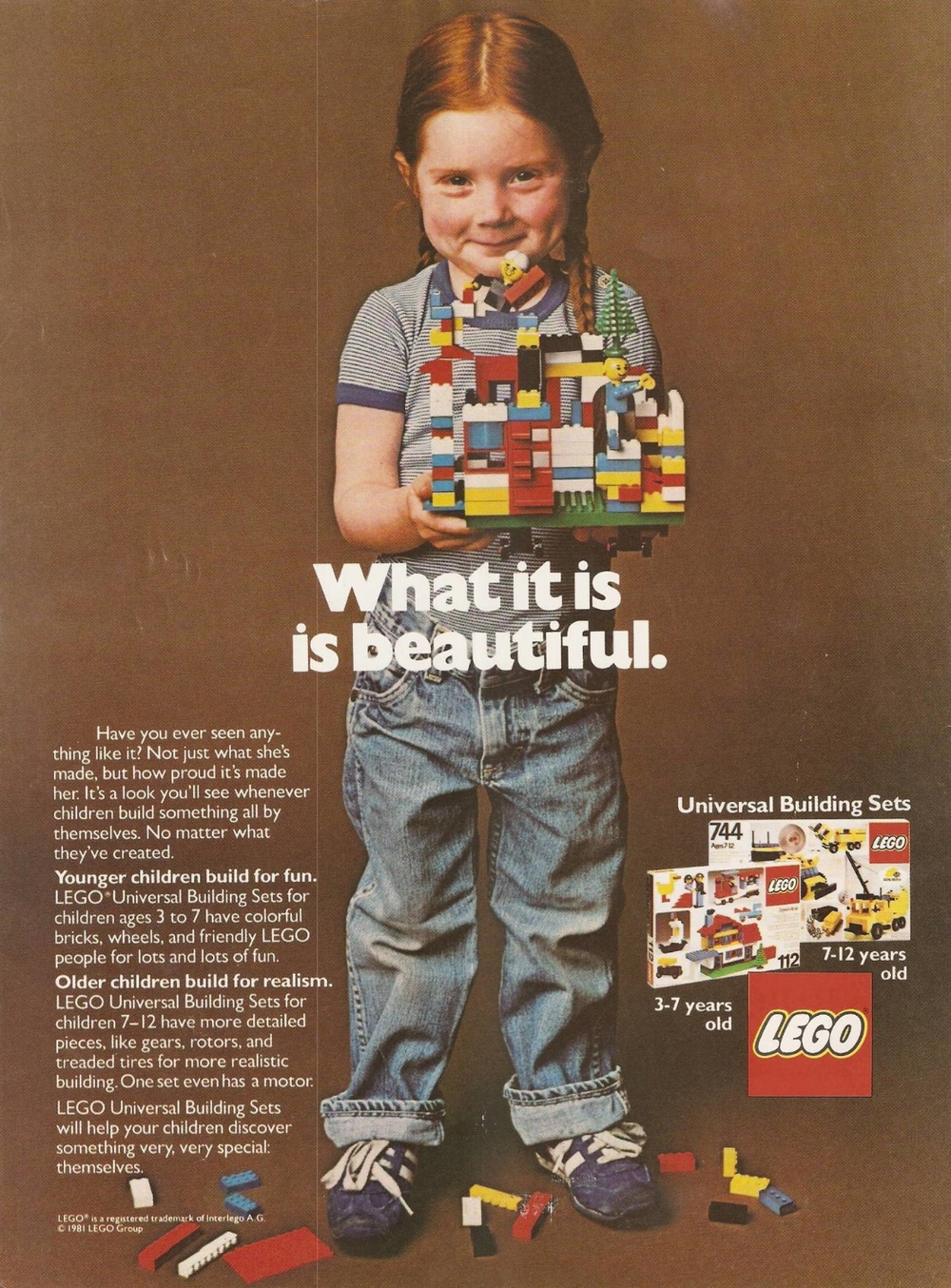LEGO Blindfold Build Challenge
Players: 1 or more
Ages: 5 and up
Cost: Free, as long as you have LEGO blocks lying around! (Starter Pack on Amazon - affiliate link)
Math Ideas: Spatial reasoning, visualization
Questions to Ask:
What do you want to try to build?
Have you ever seen this classic LEGO ad? It's one of my favorite ads of all time. The kid, her bizarre creation, and her proud smile all convey perfectly the creative potential of building with LEGO blocks.
I spent my entire childhood playing with LEGO sets. I hardly ever built the designs on the boxes. Instead, my friend Turner and I would try to invent our own space ships, robots, and bat caves, using whatever bricks we had handy.
My son, on the other hand, prefers to build exactly what is on the box and then set it on the shelf for months at a time. So when I cajole and encourage him to make something from his own imagination, I don't often get far.
Fortunately, my friend Joel Bezaire shared a perfect way to turn LEGO building into a game. It's called the LEGO Blindfold Build Challenge.
How to Play
The most basic version of the game is this: Grab some LEGO blocks and spread them out on a table. Then, blindfold yourself with a bandana and try to build something!
You can build freely without constraints, or you can try to build a specific object such as an animal, a car, a house, or a letter of the alphabet. Make sure to take a picture, because after you're done, you need to disassemble your creation so the other players have a turn with the same set of blocks.
You can check out this video below of a couple kids playing the game. This video is where Joel got his original idea, so I wanted to share it despite the fact that it has that "EPIC Youtube Kids Play AWESOME GAMES Compliation" feel to it...
Where's the Math?
Play is an essential part of learning, especially for young kids. That's because kids (and adults, for that matter) learn with their bodies.
You know that feeling when you type in your email password by pure physical memory? Your fingers move almost without thinking because they have learned that password sequence just as deeply as your conscious brain. By repeatedly making the same motion, you've trained your body as well as your mind.
Kids need to physically experience the world in order to learn fully from it. They need to walk to the table with a bowl overfilled with milk so that they learn (eventually) how to avoid spilling and, more importantly, to stop pouring the milk all the way to the top.
So when kids throw on a blindfold and try to build a dog or a house, they are learning how physical objects relate to each other while also trying to match a mental image of the object they are creating. Typically, the connection between mental image and physical object is made with the eyes, but by removing the visual clues, your child has to rely on her hands and fingers to communicate with her brain as it visualizes the object.
The moment of truth, where she rips off the blindfold and views her work for the first time, is a deep moment of learning. Does the object look like she imagined? Are there any parts that are surprising?
Spatial reasoning is, of course, the heart of this activity, but don't discount the counting occurring. Can this piece fit here? the easiest way to decide is to count, by feel, the number of studs on each piece. Your child may even start to start to subitize pieces, counting them by feel instead of counting one-by-one, and build a richer mental model of their work along the way.
Questions to Ask
You've got lots of options for questions, depending on the variation of the game you want to play.
The most important question is "What do you want to build?" If your child has a specific object in mind, their blindfold challenge will be more focused. On the other hand, if they want to build freely, let them! Their ideas will become more sophisticated the more they play, and the most important part of the game is their engagement and excitement.
If they want to build a car, for example, you could say "Let's pick out a bunch of pieces you could use. What pieces do you want to use? Why?" Getting your child to plan out some architectural ideas ahead of time is a great way to get their visualizations skills working while they can actually see the pieces. That way, once the lights go out, they know where to start.
Once your child has built an object, I highly recommend that you ask "Can I have a turn?" Your child will love to see what you create, especially if it doesn't turn out quite how you'd imagined. If you're not a huge fan of LEGO building, this is still a fun way to play with your kids using an activity they enjoy. Honestly, the more ridiculous your construction, the better!
If your house is anything like mine, it’s probably full of LEGO blocks. But if you need a starter set, this set of classic LEGO bricks is a great place to begin (affiliate link).





